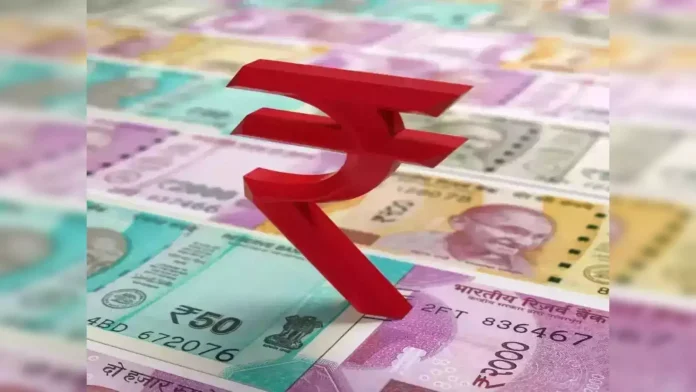The Indian rupee’s recent plunge to a record low of ₹87.29 against the US dollar has captured the attention of economists, businesses, and everyday citizens. This alarming depreciation was triggered by a combination of global trade tensions and sustained foreign fund outflows. While fluctuations in the currency market are not unusual, the circumstances surrounding this particular drop are noteworthy. In this blog, we will explore the factors leading to the rupee’s decline and examine how the rise in the US dollar, coupled with tariffs imposed by US President Donald Trump, are affecting India’s economy.
The Trigger: Trump’s Tariffs and the Trade War
In early February 2025, the Indian rupee fell sharply by 67 paise against the US dollar. The primary reason cited for this sudden drop is the tariffs imposed by US President Donald Trump on Canada, Mexico, and China. These tariffs have sparked fears of a broader global trade war, which has caused significant shifts in the global currency market.
The US president slapped a 25% duty on imports from Canada and Mexico, while China faced a 10% duty. These moves, which are the first in what could escalate into a full-scale trade war, have disrupted global trade flows. Forex traders have linked the rupee’s depreciation to these tariff measures, which have raised concerns about the potential for escalating tensions between major global economies.
How Trump’s Actions Are Affecting the Global Economy
Trump’s aggressive stance on tariffs has had ripple effects on the global economy. The tariffs on Canada, Mexico, and China are significant, given that these countries play a crucial role in global supply chains. The immediate impact has been a surge in the value of the US dollar, as investors flock to the greenback amid rising uncertainty. The dollar index, which tracks the performance of the US dollar against a basket of six major currencies, rose by 0.22% to its highest level in over two years.
The increased demand for the US dollar, driven by fears of a trade war, has resulted in a stronger dollar worldwide. As a consequence, the rupee and other currencies have weakened against the dollar. In India’s case, this depreciation is particularly concerning because it impacts businesses that import goods and services from the US, increasing costs for both companies and consumers.
The Role of Foreign Fund Outflows
In addition to global trade tensions, the rupee has also been under pressure from sustained foreign fund outflows. According to reports, foreign investors pulled out ₹1,327.09 crore from Indian markets on Saturday alone, adding to the rupee’s struggles. This outflow is part of a broader trend of capital moving out of emerging markets, driven in part by the attractiveness of the US dollar and higher yields on US bonds.
The outflow of foreign funds weakens investor confidence in the Indian economy and contributes to the rupee’s downward spiral. Foreign institutional investors (FIIs) typically sell off assets when they perceive heightened risks or expect better returns in other markets, such as the US. In this case, the strengthening dollar and the increasing yields on US bonds are likely attracting investors to the American market, causing them to pull capital from India and other emerging economies.
The Effect of Rising Oil Prices
Another factor contributing to the rupee’s weakness is the rise in global oil prices. The benchmark Brent crude price rose by 0.71% to $76.21 per barrel in futures trade, which is a significant jump. As a major oil importer, India is highly sensitive to fluctuations in global oil prices. When oil prices rise, India has to spend more on imports, increasing the demand for US dollars to pay for these imports. This puts additional pressure on the rupee, further depreciating its value against the dollar.
The Reserve Bank of India’s Intervention
To manage the rupee’s depreciation, the Reserve Bank of India (RBI) has been intervening in the foreign exchange market. Forex traders speculate that the central bank may continue to step in to stabilize the currency, but the effectiveness of such interventions is limited in the face of broad-based dollar strength.
Despite these interventions, the Indian central bank’s forex reserves are also facing pressure. While the RBI’s reserves rose by $5.574 billion to $629.557 billion in the week ending January 24, the overall trend has been one of decline. This decline has been attributed to forex market interventions aimed at reducing volatility in the rupee. The RBI’s dwindling reserves could signal that the central bank may find it harder to defend the rupee in the coming months.
What Does This Mean for Indian Businesses and Consumers?
The depreciation of the rupee has a range of implications for Indian businesses and consumers. For companies that rely on importing goods and services, the weakening rupee translates into higher costs. These increased costs are often passed on to consumers in the form of higher prices, leading to inflationary pressures. For businesses that export goods to the US and other countries, a weaker rupee may provide a competitive advantage by making Indian products cheaper on the global market.
However, the overall outlook remains uncertain. If the US continues its tariff policies and trade tensions escalate further, the rupee may continue to face downward pressure. On the other hand, if the RBI is able to implement measures that stabilize the currency, the rupee may find some stability in the medium term.
The depreciation of the Indian rupee is a result of a confluence of factors, including Donald Trump’s tariffs on key trading partners, sustained foreign fund outflows, rising oil prices, and a strong US dollar. While the RBI is actively intervening to curb volatility, the outlook for the rupee remains uncertain. Indian businesses and consumers will need to navigate this turbulent economic landscape carefully, as the effects of a weaker rupee are felt across the economy




